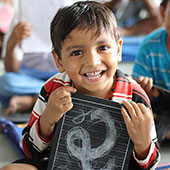• Apter, M. J. (1991). A structural phenomenology of play. In M. J. Kerr, J.H., Apter (Ed.), Adult play: A reversal theory approach (pp. 13–42). Amsterdam: Swets & Zeitlinger.
• Apter, M. J. (2014). Towards a Theory of Things: Reversal Theory and Design. Journal of Motivation, Emotion, and Personality, 2(2), 3–11.
https://doi.org/10.12689/jmep.2014.302
• Caillois, R., & Barash, M. (2001). Man, play, and games. University of Illinois Press.
• Gardner, H. (2011). Frames of mind: The theory of multiple intelligences. Basic books.
• Hourcade, J. P. (2008). Interaction design and children. Foundations and Trends in Human-Computer Interaction, 1(4), 277–392.
• Kudrowitz, B. M., & Wallace, D. R. (2010). The play pyramid: a play classification and ideation tool for toy design. International Journal of Arts and Technology, 3(1), 36–56.
https://doi.org/10.1504/IJART.2010.030492
• Mooney, C. G. (2013). Theories of Childhood: An Introduction to Dewey, Montessori, Erikson, Piaget & Vygotsky. Redleaf Press.
• Nakamura, J., & Csikszentmihalyi, M. (2014). The concept of flow. In Flow and the Foundations of Positive Psychology: The Collected Works of Mihaly Csikszentmihalyi.
https://doi.org/10.1007/978-94-017-9088-8_16
• Piaget, J. (1962). Play, dreams and imitation in childhood. New York: Norton.

